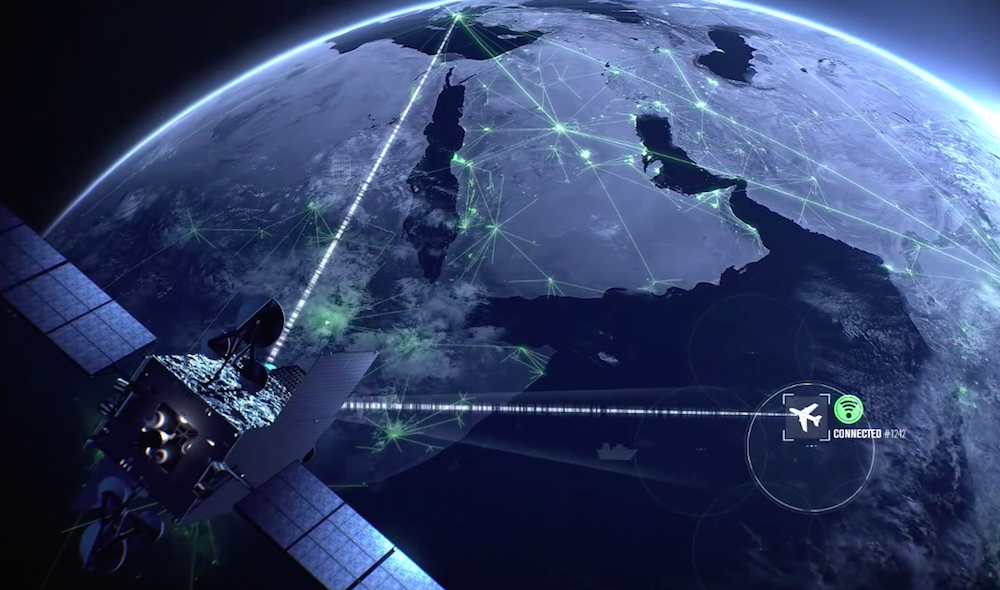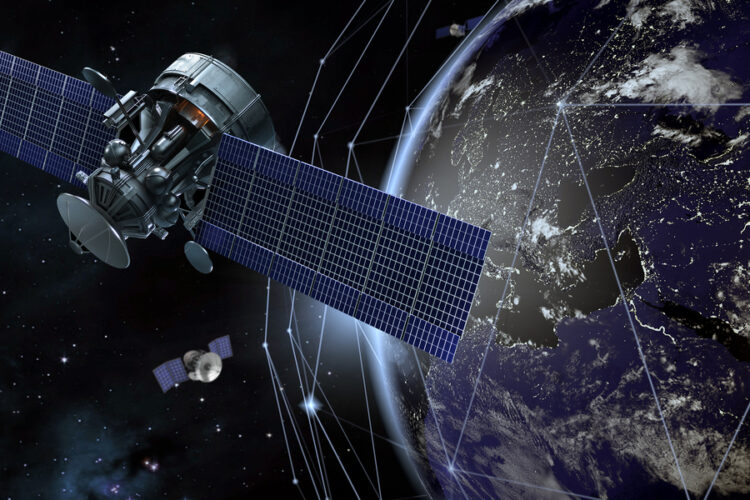The dream of universal, high-speed internet connectivity, accessible from the most remote corners of the globe, is finally within reach, thanks to the revolutionary advancements in Satellite Internet Technology. For decades, satellite connectivity was synonymous with slow speeds, high latency, and restrictive data caps. Today, the landscape is fundamentally changing, driven by new satellite constellations operating in Low Earth Orbit (LEO). These systems are delivering speeds competitive with traditional terrestrial broadband, shattering previous performance ceilings, and creating new opportunities for underserved communities and industries worldwide. Understanding the current performance metrics—speed, latency, and reliability—is crucial for consumers, businesses, and governments evaluating their future connectivity options.
This comprehensive guide delves into the core technologies that define modern satellite internet performance, provides an in-depth comparative analysis of the leading providers, explores the critical challenge of latency, and charts the future trajectory of global satellite connectivity.
Understanding the Satellite Internet Architecture
The performance of satellite internet is fundamentally dictated by the physical location of the satellites, known as the orbital constellation. Modern systems are dramatically faster because they utilize closer orbits.
A. Geosynchronous Earth Orbit (GEO) Satellites (Legacy)
These are the traditional satellites that provided internet access for the last two decades, representing the older generation of technology. GEO satellites orbit approximately 35,786 kilometers (22,236 miles) above the Earth’s equator. Because of this vast distance, the signal must travel a considerable distance up and down twice for a round trip. This physical limitation means the minimum theoretical latency is around 500 to 600 milliseconds (ms), which is half a second or more of delay. This high delay severely degrades performance for real-time, interactive applications. However, due to their high altitude, one GEO satellite can cover a very large geographical area with a fixed footprint, meaning fewer satellites are needed for widespread coverage. Providers utilizing this orbit include Viasat and HughesNet.
B. Low Earth Orbit (LEO) Satellites (The Revolution)
LEO constellations are the core of the current high-performance revolution. These satellites orbit much closer to Earth, typically between 500 and 2,000 kilometers in altitude. This proximity is the key to their speed and, more importantly, their responsiveness. The dramatically shorter travel distance reduces minimum theoretical latency to between 20 and 40 ms, which is comparable to fixed terrestrial broadband and makes real-time applications viable. Because LEO satellites cover a smaller area and move quickly across the sky, LEO systems require massive constellations, often numbering in the thousands or tens of thousands of individual satellites, to provide continuous, global coverage. Starlink and OneWeb are the primary LEO constellation operators.
C. Medium Earth Orbit (MEO) Satellites (The Mid-Ground)
MEO systems operate in a middle ground, orbiting between 8,000 and 20,000 kilometers. This orbit offers a balance, achieving better latency than GEO (around 100 to 150 ms) but not as low as LEO. MEO systems are often utilized for highly reliable, dedicated enterprise and government services rather than direct consumer broadband due to their predictable, high-capacity beams.
 Comparative Analysis: Leading Satellite Providers Performance
Comparative Analysis: Leading Satellite Providers Performance
The performance metrics—download speed, upload speed, and latency—vary significantly across the leading providers, reflecting their specific orbital architecture and network capacity.
A. Starlink (The Performance Leader)
Starlink, operated by SpaceX, currently sets the benchmark for consumer satellite performance, leveraging its rapidly expanding LEO constellation. Typical download speeds for Starlink users range from 50 to 200 Mbps, with peaks sometimes exceeding this in areas with low user density. Upload speeds usually fall between 10 and 20 Mbps. The most significant advantage is the latency, which typically sits between 20 and 45 ms. This responsiveness is revolutionary for satellite internet, making demanding applications like video calls, VoIP, and interactive gaming truly practical. Starlink is also implementing Inter-Satellite Links (ISL), using laser-based connections, which will allow satellites to pass data directly to each other without needing to route through a distant ground station. This technology is expected to further reduce latency, especially for long-distance, trans-oceanic data routes.
B. Viasat (The High-Capacity GEO Player)
Viasat, an established GEO player, focuses on delivering high bandwidth capacity with its newest satellite generations, such as ViaSat-3. Typical download speeds can range from 25 to 150 Mbps, positioning them competitively in terms of pure throughput. However, the limitation imposed by the GEO orbit means latency remains high, often falling between 550 and 650 ms. Upload speeds are generally lower, typically between 3 and 10 Mbps. This high delay makes interactive use cases difficult, but the system is quite capable for one-way traffic like streaming or downloading large static files. Viasat targets both rural consumers and specialized markets like commercial aviation.
C. HughesNet (The Accessible GEO Option)
HughesNet, another major GEO provider, offers more moderate speeds focused primarily on rural accessibility. Typical download speeds range from 25 to 50 Mbps, with corresponding upload speeds of 3 to 5 Mbps. Similar to Viasat, the inherent high orbit dictates a high latency of 600 to 700 ms. HughesNet’s strength lies in its widespread availability and established customer base, often serving as the only high-speed option in the most remote areas, despite the latency trade-off.
D. OneWeb (The Enterprise-Grade LEO)
OneWeb is focused on high-reliability, enterprise-grade connectivity, rather than direct consumer services, targeting governments, maritime, and cellular backhaul. Operating at a slightly higher LEO altitude (1,200 km) than Starlink, OneWeb’s speeds are competitive, offering 50 to 150 Mbps download and 10 to 30 Mbps upload. The slightly higher orbit results in slightly higher, but still low, latency in the 70 to 150 ms range. OneWeb prioritizes reliability and guaranteed service levels over the lowest possible latency, making it ideal for business continuity and critical infrastructure.
The Latency Challenge: The True Differentiator
In modern internet use, latency (the delay before a transfer of data begins following an instruction) is often a more important measure of quality than raw download speed, especially for applications that require immediate feedback.
A. The Speed of Light Limitation (The Physics)
The 500ms+ delay inherent to GEO satellites is not a technology failure; it’s a limitation imposed by the speed of light. Data must physically travel that distance. This delay significantly affects the performance of most internet protocols, especially TCP (Transmission Control Protocol), which constantly requires acknowledgment messages. This high-latency environment ultimately limits the actual perceived throughput, even if the raw bandwidth is theoretically high. As a result, interactive, real-time applications are severely degraded.
B. LEO’s Latency Mitigation Strategy
LEO constellations overcome the fundamental physics problem by dramatically shortening the distance, allowing the creation of a much more responsive network. LEO providers further minimize latency by strategically placing a dense network of ground stations near major population centers and internet peering points. Furthermore, as LEO systems fully implement ISLs, data will travel through the vacuum of space, where the speed of light is faster than through the glass core of a fiber optic cable. This means, counterintuitively, that some long-haul routes could eventually have lower latency via LEO satellite than via terrestrial fiber.
Key Performance Factors Beyond Orbit
Satellite performance is influenced by a complex interplay of environmental, technical, and commercial factors that can dramatically affect the user experience, regardless of orbit.
A. Environmental Conditions (Atmospheric Interference)
- Rain Fade: Heavy rain, snow, or dense cloud cover can significantly attenuate the signal, reducing both speed and reliability. LEO systems, using higher frequencies, are somewhat more susceptible to rain fade than GEO systems, though this is mitigated by providing higher satellite redundancy.
- Clear Line of Sight: The user terminal (dish) requires an unobstructed view of a large portion of the sky to track the rapidly moving LEO satellites. Obstructions like tall trees or buildings can cause service interruptions, known as “blockage events.”
B. Network Density and Shared Bandwidth
- Cell Capacity: Satellite providers divide their coverage area into cells, and the available bandwidth within that cell must be shared among all active users. This means that even with a fast system like Starlink, speeds will drop significantly during peak usage times (evenings and weekends) in areas where the provider has sold too many subscriptions relative to the available satellite capacity.
- Capacity Upgrades: Providers are constantly launching new generations of satellites and implementing techniques like frequency reuse to increase the total capacity and reduce per-user congestion, aiming to stabilize the variability in speeds.
C. User Terminal Technology (The Dish)
- Phased Array Antennas: LEO systems rely on sophisticated, flat phased array antennas that electronically track multiple satellites simultaneously without physically moving. This advanced technology is essential for the low-latency LEO architecture but is also more complex and expensive to produce than traditional GEO dishes.
- Power Consumption: The phased array technology consumes significantly more power than a simple GEO dish, which is an important consideration for portable or off-grid installations.
 The Market Impact and Future Trajectory
The Market Impact and Future Trajectory
High-performance satellite internet is poised to create immense economic opportunities, particularly in closing the global digital divide.
1. Bridging the Digital Divide (Global Inclusion)
- Rural Broadband: LEO services provide a viable, high-speed alternative in areas where laying fiber optic cable is geographically difficult or economically unfeasible. This is transformative for remote homes, farms, and small businesses.
- Developing Nations: Providing affordable, reliable connectivity to regions currently reliant on slow, expensive, and often unreliable cellular data or legacy GEO services, fostering economic growth and access to information.
2. Enterprise and Mobility Markets
- Aviation: High-speed, low-latency satellite internet is dramatically improving in-flight connectivity (IFC), transforming the passenger experience and improving aircraft operational efficiency.
- Maritime: Providing true broadband to ships and maritime fleets, which enhances crew welfare, logistics, and data transmission capabilities.
- Cellular Backhaul: LEO systems are increasingly used to connect remote 4G and 5G cellular towers back to the main internet backbone, rapidly extending mobile coverage to previously unreachable areas.
3. The Race to the Sky (The Competition)
The competition is escalating beyond Starlink and OneWeb. Companies like Project Kuiper (Amazon) are actively developing massive LEO constellations, aiming to introduce thousands of satellites with advanced inter-satellite laser links. This fierce competition is crucial, as it will inevitably drive down consumer pricing, accelerate technological innovation, and ensure greater bandwidth capacity globally, ultimately benefiting the end-user. The future involves a multi-layered ecosystem where GEO, MEO, and LEO systems coexist, each serving a different connectivity need based on the trade-off between latency, speed, and coverage.
The days of slow, unreliable satellite internet are quickly drawing to a close. The shift to Low Earth Orbit satellites has fundamentally reset performance expectations, delivering speeds and latency figures that were unimaginable a decade ago. While challenges related to congestion and environmental factors persist, the ongoing launches and technological maturation of LEO constellations promise a future where geographical location is no longer a barrier to global, high-speed internet access. The true measure of a satellite provider now lies not just in its peak download rate, but in its ability to consistently deliver low latency and high reliability across its entire service area.











